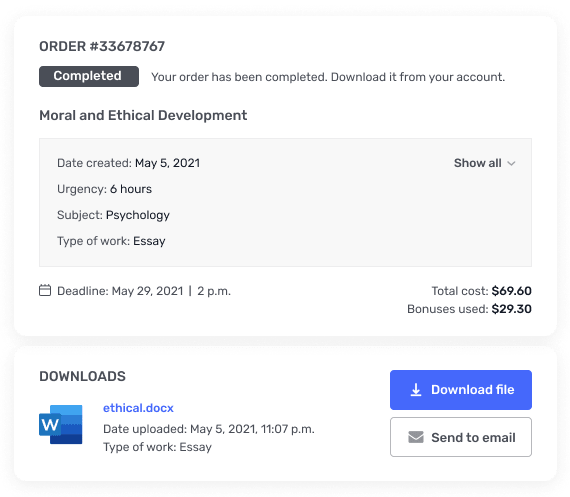Emerging Issues of Pay-for-Performance in Health Care
Emerging Issues of Pay-for-Performance in Health CareFrederick G. Thomas, Ph.D., C.P.A. and Todd Caldis, Ph.D., J.D.In the 1990s, managed care with capitation was regarded as the policy tool ofchoice that would control rising healthcare costs. An explicit emphasis on healthcare quality was largely absent, as administrative focus was on the cost per member/per month and provider organizations(POs) that fought to capture market share.In the new century, capitation has to somedegree receded as the payment tool ofpreference as new thinking has spreadthrough the health care marketplace.Health care is seen as entering an agein which both quality and efficiency areparamount in the purchase and deliveryof health care. Taken together, the dualgoals of quality and efficiency lead to a keyconcept: pay-for-performance (P4P). Thisconcept is also referred to as value-basedpurchasing (VBP).P4P can be broadly defined “…to includeany type of performance-based providerpayment arrangements including thosethat target performance on cost measures”(Dudley and Rosenthal, 2006). Various private sector programs have been implemented to reward providers for deliveringhigh quality efficient care. However, theseprograms have been fairly limited in scopeand scale. Opportunity abounds for demonstrating how P4P can be implemented toprovide the right incentives to create quality, efficiency, and value in the delivery ofhealth care.Defining quality can be challenging. Incost effectiveness studies economists haveThe authors are with the Centers for Medicare & Medicaid Services (CMS). The statements expressed in this article are thoseof the authors and do not necessarily reflect the views or policiesof CMS.used the concept of the quality adjustedlife years to depict the change in qualityover time. This concept of value is simple:the increase in health care costs for somespecific treatment is put into perspectiveby measuring longer life for those patientsreceiving the treatment, a highly targetedmeasure of quality. By contrast, in healthcare generally consumers, providers,and payers are interested in finding moredirect and more timely measures of qualityand value.Quality indicators (QIs) and processmeasures have been developed, and continue to be refined. Such measures haveentered into consumer awareness throughWeb-based portals. End stage renal diseasepatients can compare dialysis facilities onseveral quality measures: anemia, hemodialysis, and patient survival (http://www.cms.gov/ DialysisFacilityCompare/). Beneficiaries can compare the QIs for heartattack, heart failure or pneumonia, or patients having surgery on Medicare’s Hospital Compare (http://www.cms.hhs.gov/HospitalQualityInits/25_HospitalCompare.asp). Quality measures for nursing homeservices are available on the Nursing HomeCompare (http://www.cms.hhs.gov/ NursingHomeQuality Inits/01_Overview.asp).Congress has also mandated that valuebe part of the payment equation in thepurchase of Medicare hospital services.The 2005 Deficit Reduction Act requiredCMS to designate by October 1, 2007, hospital-acquired conditions that starting onOctober 1, 2008, will preclude assignmentof a hospital stay to a higher paying diagnosis-related group unless it can be documented that the condition was alreadyHealtH Care FinanCing review/Fall 2007/Volume 29, Number 11present on initial admission. In accordancewith the law, CMS has targeted specifichospital-acquired conditions: objects leftin surgery, air embolisms, blood incompatibility, catheter induced urinary infections, bedsores, vascular catheter inducedinfections, mediastinitis after coronarybypass, and falls occurring in a hospital(http//:cms.hhs.gov/Acute InpatientPPS/downloads/CMS-1533-FC.pdf).The 2006 Tax Relief and Health Care Actauthorized the establishment of a physician quality reporting system for Medicare,which CMS is implementing as the physician quality reporting initiative. The lawbuilds on a voluntary quality reporting program for physicians that CMS initiated in2006. Under this act, physicians who successfully report a set of quality measuresfrom July 1 to December 31, 2007, may earna bonus payment, subject to a cap, equalto 1.5 percent of total their total allowedMedicare charges for the six-month period.Over the last year, the policy community has focused increasing attention onusing episodic groupers as part of a moveto a VBP system in Medicare. Episodicgroupers classify patient claims into episodes of illness, making it in principlefeasible to construct physician efficiencyreports by types of illness. MedPAC hasissued two reports in the past year relatedto episode groupers (http//:www.medpac.gov/documents/Jun06_EntireReport.pdf). These analyses suggest that episodegrouping techniques might have potentialas tools to be used by Medicare to profilephysicians and identify physicians withunreasonably high costs per episode.Using annual Medicare claims data, theU.S. Government Accountability Office(2007) found substantial cost variationacross patients within disease types. Extending the results of their study to a VBPperspective, it might be possible to generate physician profiles from claims data and2identify those practitioners associated withhigher care costs (which could indicateless efficient practice patterns). In addition, various umbrella organizations, suchas Ambulatory Care Quality Alliance andthe National Quality Forum, are working todefine a set of conceptual standards that canbe used in constructing physician profiles.In this special edition issue of the HealthCare Financing Review, the five articlesadd to our understanding of VBP by focusing on problems of implementation anddesign of P4P. In the article by Cromwell,Drozd, Smith, and Trisolini, models of P4Ppayment arrangements are developed andsimulated results are shown. A “…decisionmaking under uncertainty…” approachis used to structure sensitivity analysisof results. Based on the simulations, theauthors conclude that the best P4P payment strategies are those that link QIs topatient outcomes, set challenging targetrates of improvement, and tie bonuses totrue improvements over baseline levels.In their article Kautter, Pope, Trisolini,and Grund present bonus calculationsand other design aspects of the PhysicianGroup Practice Demonstration. A legislative mandate for the demonstrations wasincluded in the 2000 Medicare, Medicaid,and State Child Health Insurance ProgramBenefits Improvement and Protection Act.Ten physician groups participated in this3-year demonstration, which started onApril 1, 2005. “The PGP Demonstrationseeks to align incentives for physiciangroups to manage the overall care of theirpatients, especially beneficiaries withchronic illnesses and high-risk patientswho account for a significant portion ofMedicare expenditures. The demonstration provides a financial incentive similarto those used by managed care organizations and other commercial payers toreward quality improvement and encourage efficiency” (Leavitt, 2006). The articleHealtH Care FinanCing review/Fall 2007/Volume 29, Number 1provides valuable insights into the calculation performance bonuses and the associated problems of quality measurementand reporting.Pope and Kautter in their article presenta methodology for profiling the cost efficiency and quality of care of 30 large physician organizations and 4 physician networksin the Boston metropolitan area. Theydeveloped a profiling system that operationalizes the attribution of costs to physicianswhile controlling for patient-level risk andquality of care. They then construct an efficiency index to compare the relative costsacross the 30 practices.Attributing services to a particular physician is extremely important in specifying a reliable and valid physician profilingsystem. Physician attribution on Medicareclaims proves to be a somewhat elusiveassignment, as identifying informationon Medicare claims may be at the physician group or tax identification levels.To identify physician networks, Pope andKautter developed a physician assignmental
gorithm using a plurality of outpatientevaluation and management visits. Theyfound that 74 percent of visits are reliablyassigned by their algorithm.Pope and Kautter standardized costsacross the practices by assigning claimsadjusted for risk, using the hierarchicalconditions categories model, teaching anddisproportionate share hospital payments.Finally, they present a composite qualityscore with their claims-based measures.Geographic variation is not adjusted, sincethe study is focused on only one metropolitan area. Using this methodology, andexcluding one organization that specializedin oncology, they found that only 1 of the30 practices has an index value that is suggestive of an “inefficient network.” Theyconclude that the potential savings fromredirecting patients to more efficient providers may not be particularly large, sinceso few organizations would be consideredinefficient. However, the authors reasonthat the threat of losing patients may bepotent in modifying physician behavior.Davidson, Moscovice, and Remus intheir article investigate the impact of hospital size on composite quality scores. It isa truism in applied statistics that the number of observational units (size) affects thevariability of a sample. They use Bayesianhierarchical models to assess the impactof size on the ability to infer “true” ranksin P4P programs. The source of theirresearch data is the Premier HospitalQuality Incentive Demonstration that originally operated for 3 years from October1, 2003 – September 30, 2006, and is presently continuing under an extensionthrough 2009. In the demonstration, hospitals have an incentive to report and deliverhigher quality care. They are ranked bytheir composite quality scores, which arereported for five conditions. Hospitals inthe top decile receive a bonus, a percentage of their inpatient payments, while hospitals ranked in the bottom decile incura penalty.The authors focused their attention onthe performance of 47 rural and criticalaccess hospitals that are participating inthe demonstration. They obtained additional data for ordinal ranking of hospitals from Medicare Hospital Compare databy critical access hospitals. Their resulting analysis includes hospital rankings onthree conditions which are often encountered in hospitals located in rural settings:acute myocardial infarction, heart failure,and community acquired pneumonia. Theirstudy finds an inverse relationship betweensize and the statistical confidence interval,or uncertainty, around a mean ranking forthe three conditions analyzed, and theyconclude that hospital size should be considered in measuring quality, so as not topenalize smaller providers unduly.HealtH Care FinanCing review/Fall 2007/Volume 29, Number 13Lastly, Young, Burgess, and White describe the lessons learned as the national evaluator for the Rewarding ResultsDemonstration, which operated in sevensites. These pay-for-quality (P4Q) programs varied by site, having individualized quality measures, financial incentives,and physician organizations. A survey of1,500 physicians and telephone interviewswith plan executives were used to gatherinformation for this study. Some of the relevant lessons from this study include: (1)POs can develop the necessary infrastructure in response to quality incentives; (2)making physicians aware of P4Q programsis a challenge; (3) data must be accurateand valid; (4) the lack of infrastructure is amajor barrier to implementing a P4Q program; (5) incentives directed to POs tendto limit physician involvement; and (6) thecost of the infrastructure may exceed thebenefits, at least in the short run.The articles in this edition of the Reviewaddress emerging issues of this importantnew area of the health services research.With a focus on value, our system will be ina state of transition to approaches that can4demonstrate quality and efficiency in thedelivery of health care. As the baby boomergeneration becomes eligible for Medicare,and begins the strain on the health caresystem within a decade, value for the healthcare dollar becomes even more important.To implement P4P systems, substantiallymore research will be needed to operationalize the concept of value in a meaningfulway for providers and patients.reFerenCeSDudley, R.A. and Rosenthal, B.: Pay for Performance:A Decision Guide for Purchasers. Agency forHealthcare Research and Quality, Publication Number 06-0047, April 2006. Internet address: http://www.ahrq.gov/qual/p4pguide.pdf. (Accessed 2007.)Leavitt, M.O., Department of Health and HumanServices: Report to Congress: Physician GroupPractice Demonstration First Evaluation Report.2006U.S. Government Accountability Office: Focus onPhysician Practice Patterns Can Lead to GreaterProgram Efficiency. GAO-07-307, April 2007.Reprint Requests: Frederick G. Thomas, Ph.D., Centers for Medicare & Medicaid Services, 7500 Security Boulevard, Mail StopC3-19-07, Baltimore, MD 212144-1850. E-mail: fred.thomas@cms.hhs.govHealtH Care FinanCing review/Fall 2007/Volume 29, Number 1




